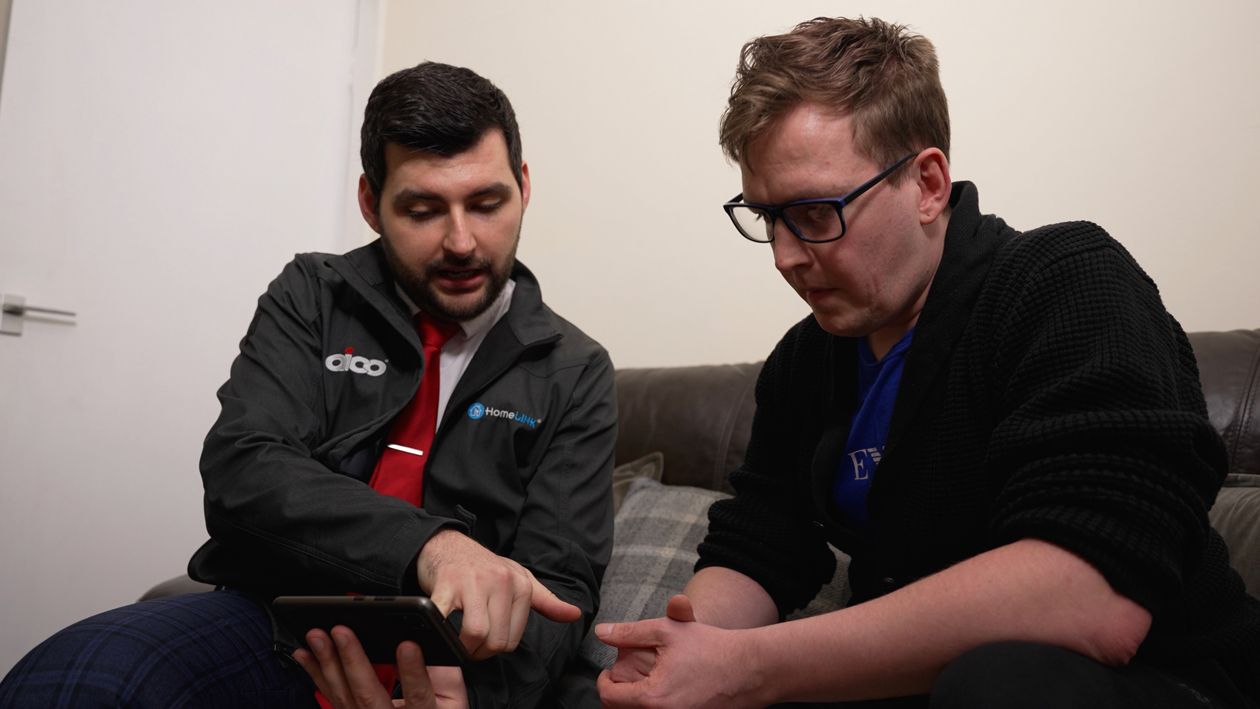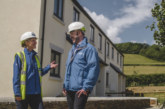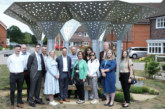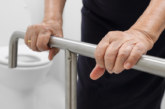Sam Collier, Sustainability & Ethics Lead for HomeLINK discusses how connected technology can support the health, safety and wellbeing of social housing residents.
Social housing providers are facing a monumental challenge to deliver decent homes against a backdrop of global climate and energy crises, uncertain economic conditions, and a raised profile of housing quality.
Back to basics
The core purpose of social housing is to provide safe, affordable, comfortable homes for those who need them. There are over five million social homes across the UK, representing almost 20% of all households. Ensuring these properties are built and maintained to a standard which guarantees residents’ safety and comfort, whilst sustaining a level of rent that is achievable to those on low incomes, is a mammoth task which housing providers are battling daily.
These pressures do not exist in isolation to external factors, such as the ever-growing burden of climate change and a cost-of-living crisis exacerbated by inflated global energy prices. Providing good quality social housing is a difficult task in itself, but delivering this service alongside the backdrop of these broader contextual challenges makes it all the more difficult.
Poor quality housing causes a substantial drain on public resources, with an estimated cost to the NHS in England of £1.4bn to treat those experiencing health effects attributed to living in poor housing (1). When considering the wider societal impacts such as reduced educational attainment, poor productivity, decreased social capital, and the impacts on asset value and future costs of delayed retrofit and other interventions, annual costs could reach £18.5bn.
 Data, data, data
Data, data, data
To approach a challenge of this magnitude, it is useful to understand the starting point. In other words, we need to know the condition of the existing housing stock and its performance, so we can target the most in-need properties with appropriate solutions.
At present, comprehensive data on the state of the nation’s social homes is limited. Huge uncertainty exists over indoor air quality, which has been found to have significant impacts on inhabitant’s health. Improving what we know about our homes is vital in understanding how to move forward.
The connected home
There is good news, however. Substantial innovation is emerging to address some of these core challenges, partly enabled by policy, regulation and funding. We also need (and are seeing increasing numbers of) housing providers who are willing to pilot new innovations to tackle these issues, providing evidence that these tools can be used to better understand the conditions within and the performance of our housing stock.
HomeLINK, Aico’s connected home solution, provides a solution to improve data across safety, affordability, and comfort. Aico has been providing the UK social housing industry with smoke, heat, and CO alarms for over 30 years, and it’s connected offering provides a means of monitoring these life safety devices remotely.
In addition, environmental sensors co-designed with social landlords have been rapidly brought to market to meet existing demand, providing rich insight into the health of the home. Collection of as-used building data can be used to develop risk insights into issues such as damp and mould, overheating, fuel poverty, thermal efficiency, and indoor air quality, enabling landlords to take a proactive approach to overcoming inadequate living conditions for their residents.
Having this data at scale can provide the foundation for the development of more advanced analytics. A feature of the HomeLINK Portal recently brought to market breaks down the nature of a damp and mould risk to aid landlords in identifying its source, and to plan an appropriate approach to resolve the problem. This might include improving ventilation, enhancing thermal performance, or providing advice to residents about how they can maintain a good indoor environment.
Stirling Council recently announced its intention to install over 50,000 IoT devices in what will be the largest rollout of the technology to date. The connected devices will be used to ensure homes are healthy, target energy efficiency works and monitor their effectiveness, provide a means of proactive maintenance, and significantly improve life safety.

Residents and affordability
There is also a need to ensure residents are seen as an integral part of decisionmaking and are given the opportunity to participate in these processes. The effectiveness of good quality housing provision will depend on the role of tenants, opportunities for diverse voices to be heard, and subsequent empowerment. Residents have been involved in the Stirling project since its inception and have been key to its success.
Tenant Robert Cairney says: “I was initially sceptical about what the sensors and technology being put into my home would bring in terms of financial or health benefits. However, by recording moisture in the air, I can be alerted to the risk of damp and mould.
“This new IoT technology for homes like mine is fantastic because it helps me to feel safer, live in a healthier environment, and reduce costs. I’m more aware of how my home is behaving, and alerted to ways I can save money by using this free cutting-edge connected home kit.
“For example, wasting money trying to heat a home that has gaps in the doors and windows letting heat out, or an inefficient boiler and room heaters that need bleeding. Everyone is concerned about the rising costs of energy but, thanks to these improvements, it’s not a question of eat or heat for me now.”
Making homes more energy-efficient and reducing their running costs go hand in hand. Landlord investment in energy efficiency improvements for their housing stock has a direct impact on the disposable income of their resident. With household budgets increasingly stretched, easing the stress on resident finances reduces the risk of rent arrears whilst improving lives and reducing health impacts.
This level of insight does not need to come at a premium. Aico’s rollout of connected fire and carbon monoxide alarms across Barnet Homes’ housing stock provided £2.70 return on investment for every £1 spent on equipment. Savings were seen across compliance reporting, increased asset lifetime, and reduce maintenance, whilst significantly improving resident safety.
Header image: Stirling in Scotland










